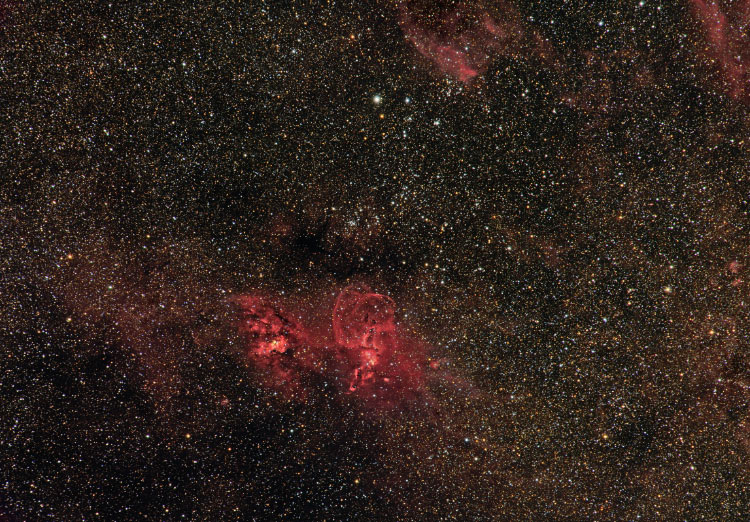
About this Image |
|
|
These rarely imaged nebulae are situated between the Southern Cross and Eta-Carinae. Both nebulea are very active starforming regions and emit strongly in the light of ionized hydrogen (H-Alpha).
They are 7.000 and 14.000 light years away respectively. NGC 3576 with its characteristic loops formed by stellar winds also contains a number of prominent Bok Globules,
dark dense stellar nurseries. NGC 3603 (left) may well be the largest nebula in our galaxy and features concentrations of young, hot and massive Wolf-Rayet stars, much like at the center of the Tarantula Nebula (NGC 2070).
|
|
|
| Optics |
105mm TMB refractor with flattener at f/6.5 |
| Mount | AP-400 GEM |
| Camera | SBIG STL-11000M at -20C, internal filter wheel |
| Filters | Astronomik H-alpha (15 nm) + RGB |
| Date | Aug 09, 2004. |
| Location | Hakos/Namibia |
| Sky Conditions | mag 6.5, high transparency, temperature 14 C, |
| Exposure |
Ha = 30 minutes (10-minute sub-exposures), RGB= 10:10:10 min (5-minute sub-exposures) all 1x1. |
| Processing |
Image aquisition in Maxim DL 4.0; Image calibration, aligning, mean stacking, DDP and color synthesis in ImagesPlus; Photoshop: H-alpha blended to red and L channel; cropped, Noise reduction by Neatimage; |